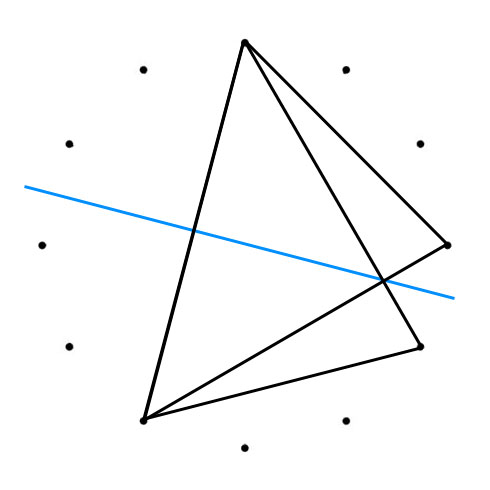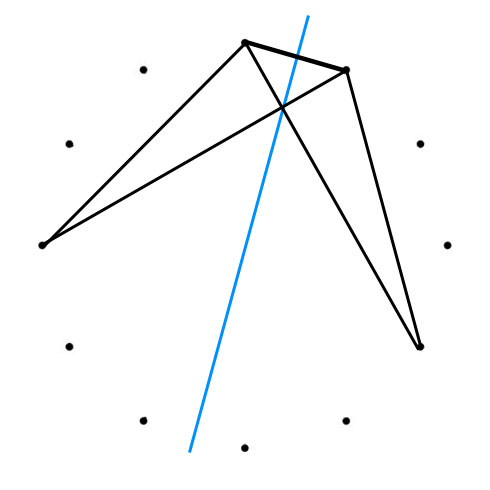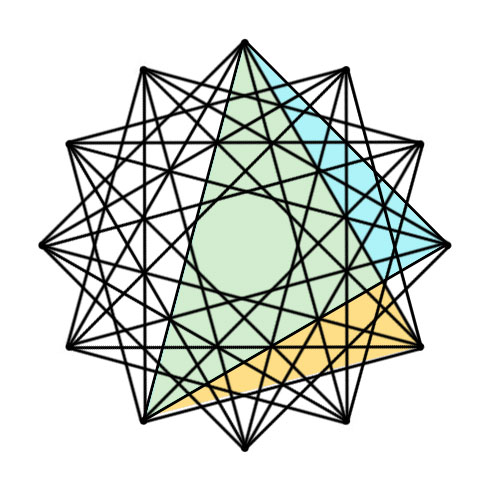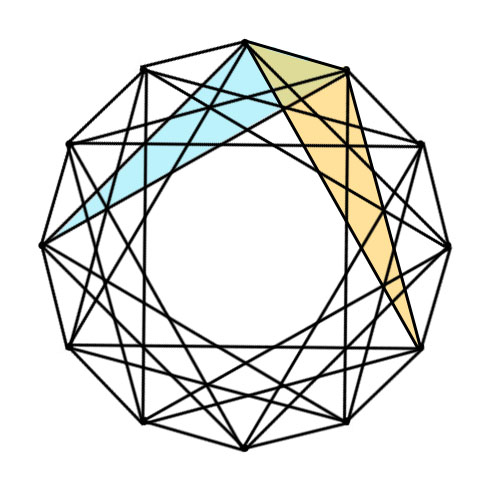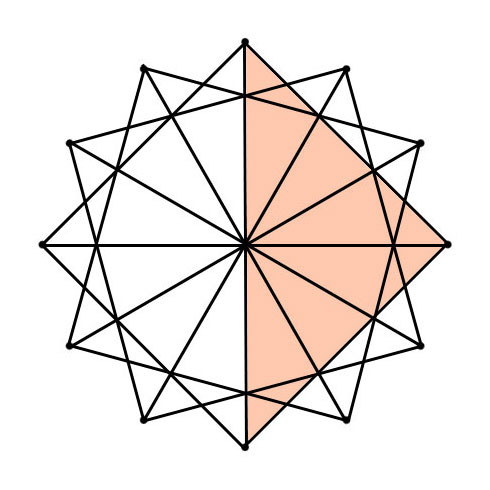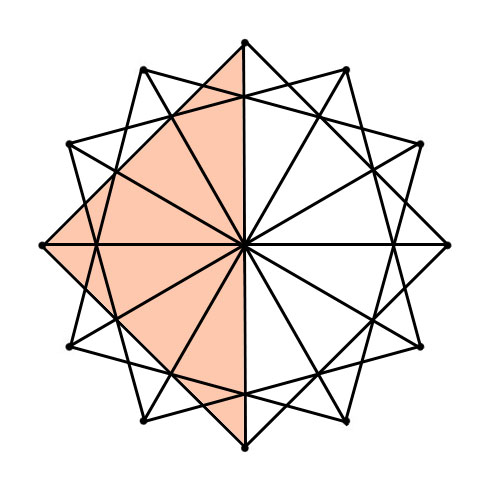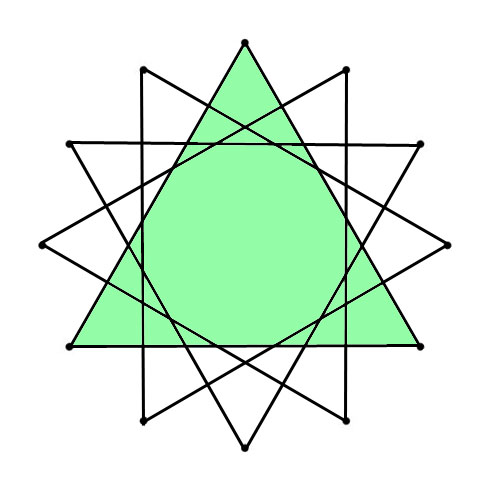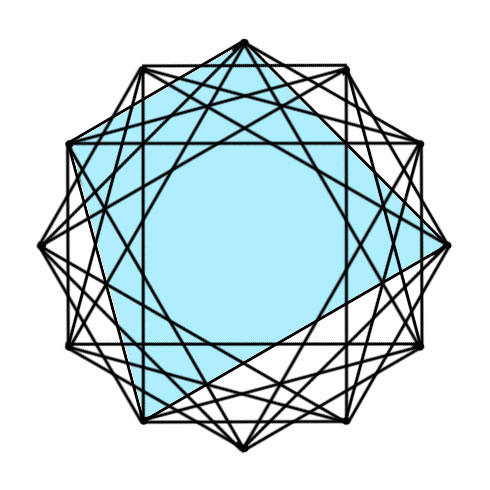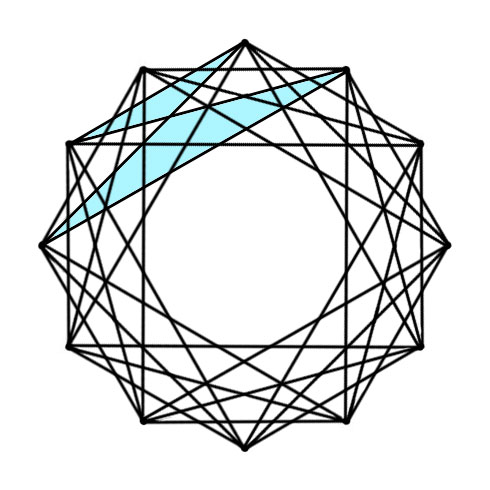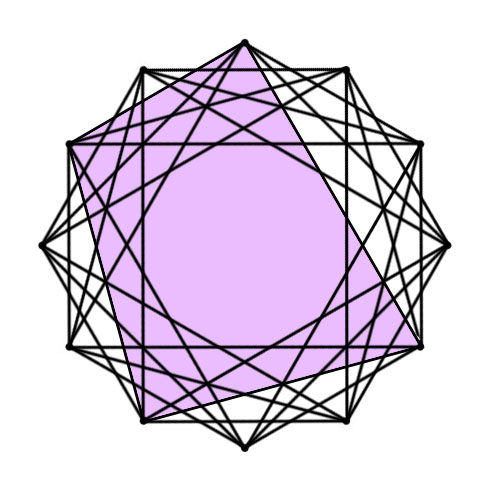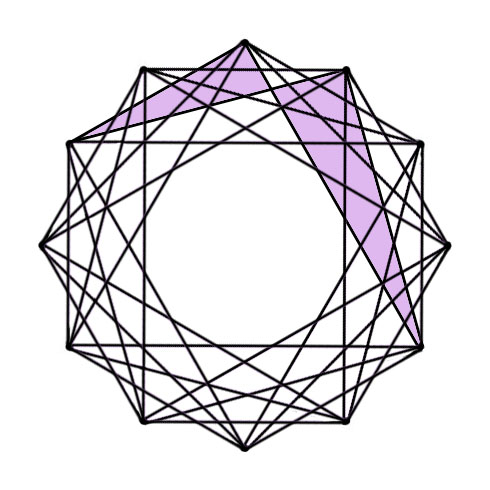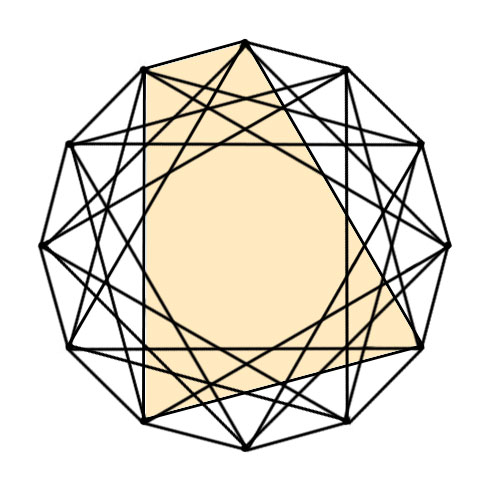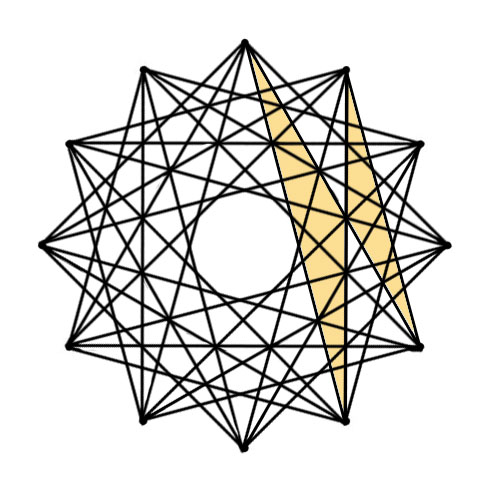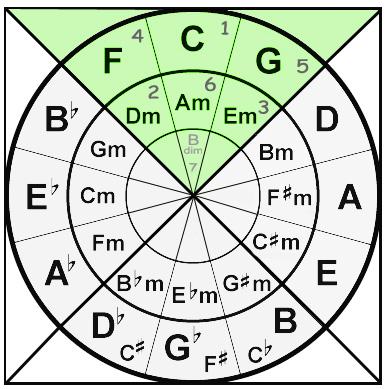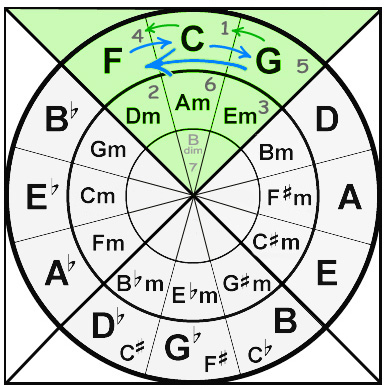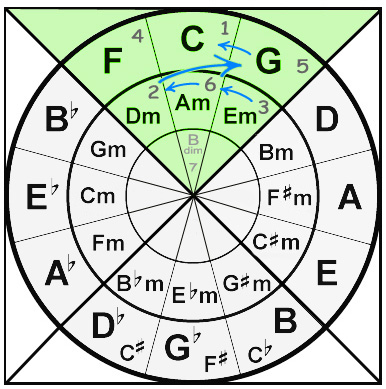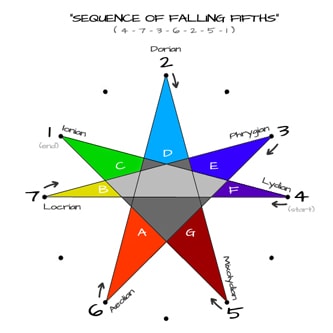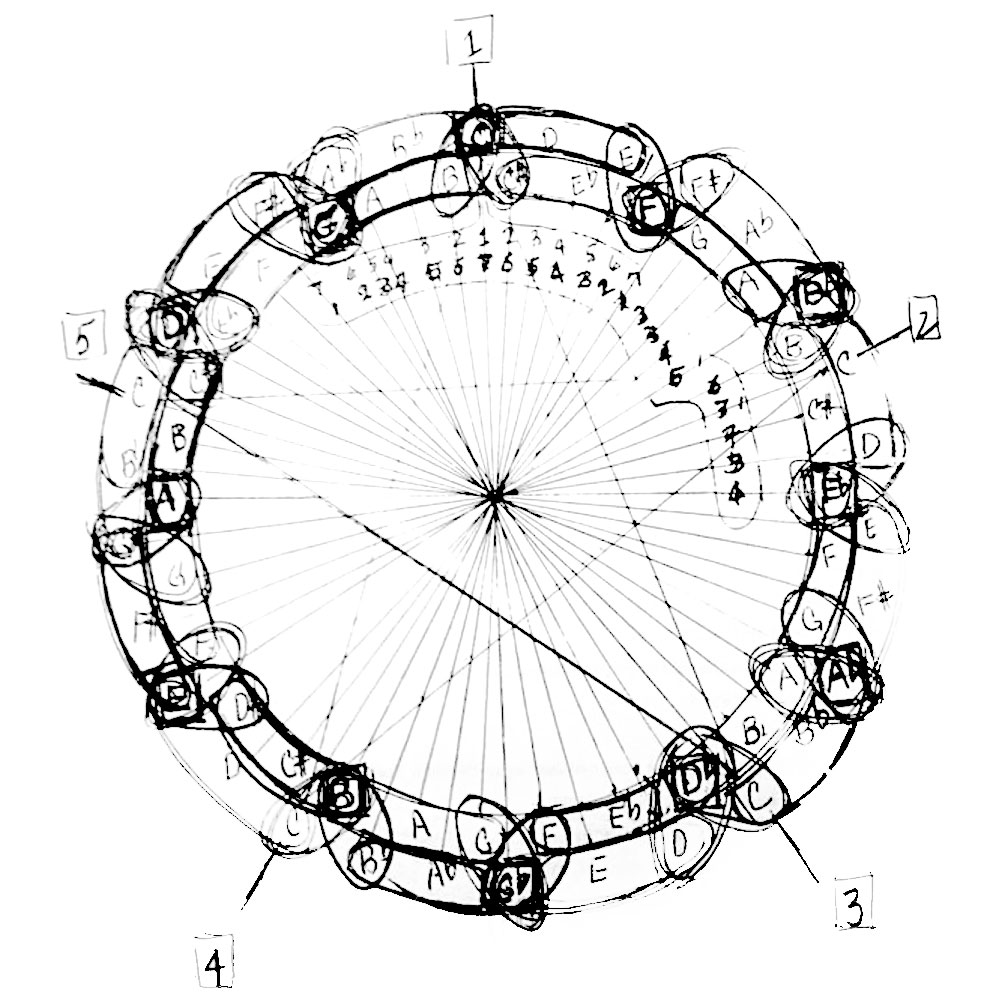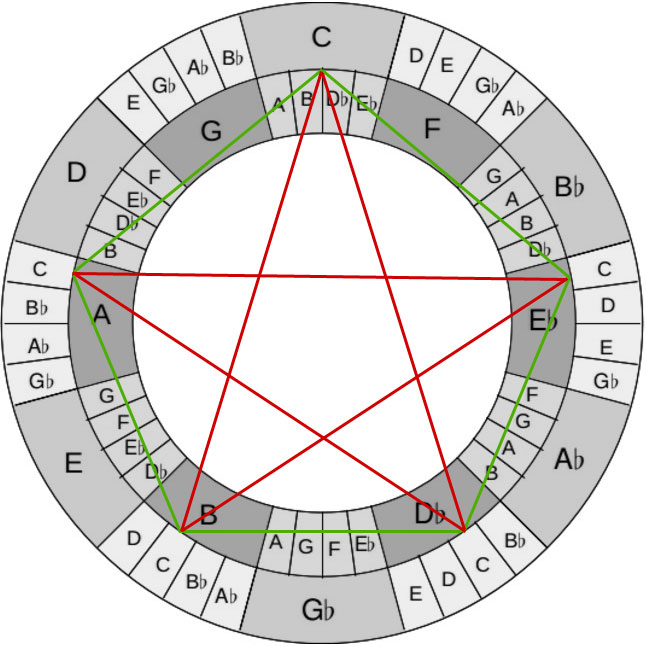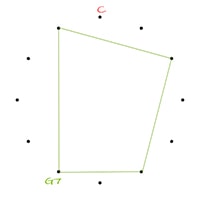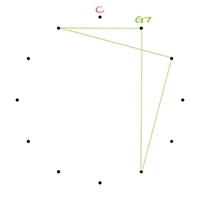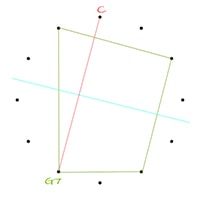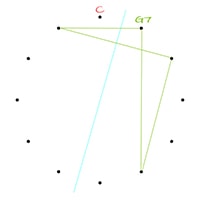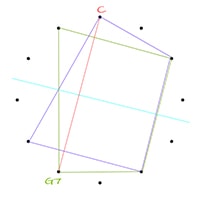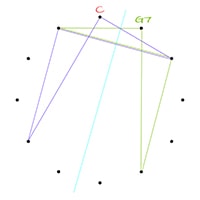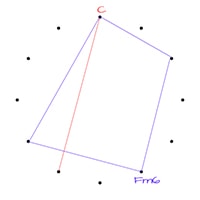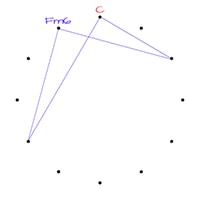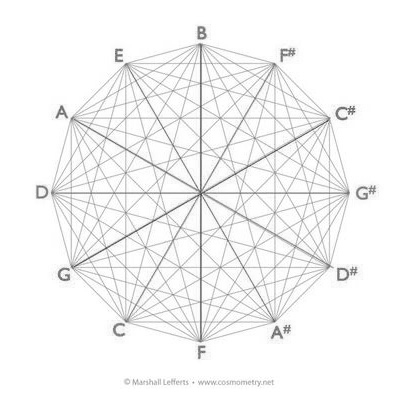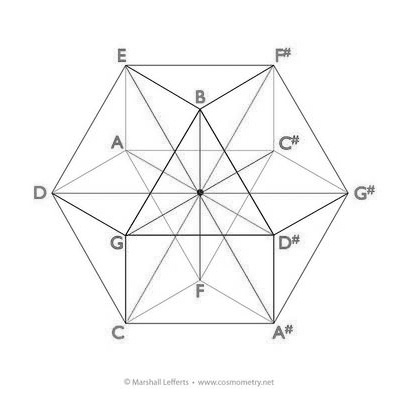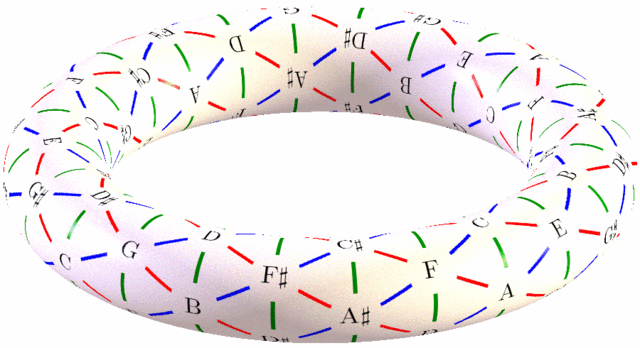Reading Time: 7 minutes
MUSIC & GEOMETRY – PART 4 – VARIOUS
In this part about music and geometry I like to share various related things.
“COUNTING CORNERS”
Another way to look at geometry and sound is angles (arc minutes) and the tones you could generate with them if you change the unit from degrees to Hertz:
The sum of the angles of these polygons could create the tone of F♯ at 180Hz, 360Hz, 720Hz and 1800Hz.
Other polygons – not found in the standard tone circles – would also create interesting tones. For example, the Pentagram (5 angles of 108°) would generate a C♯ a harmonic 5th at above 180Hz, a Septagon (7 angles of 128 4/7°) would generate an A♯ at 900Hz, the Octagon (8 angles of 135°) generating a C♯ at 1080Hz, et cetera …
With other words, the “series” of Polygons with increasing number of angles relates closely to the Harmonic Series in music.
Of course Hertz and Degrees is not the same thing. Most sound frequencies are ‘directional’ and/or ‘omni-directional’. No ‘sharp edges’ as with a triangle or square, but spherical and/or cone-shaped.
You can’t just “swap” units and say it’s all the same. But there does seem to be a lot of similarities between the math behind the units, as between many things in the universe. Some ‘laws’ seem to apply for a lot of things if not everything.
PLATONIC SOLIDS
We can’t call this geometry article “complete” without mentioning the Platonic Solids.
The reason to mention these is because of their obvious relation with a few of the shapes found earlier in this article, in particular the Trigon (triangle) and Quadragon (Square).
The Platonic Solid that is a direct “one-on-one” match with musical geometry is the Tetrahedron. You can create a Tetrahedron by connecting 4 Trigons (the Major Thirds / Minor Sixths relationships within one octave within the tone circle).
For the Octahedron you would need 2 2/3 octaves, and 5 octaves for the Icosahedron.
The 3 Squares that represent the Minor Thirds and Major Sixths relationship within the tone circle only forms half a Hexahedron. You would need to cover 2 octaves to generate 6 Squares to complete the Hexahedron.
The only Platonic Solid that does not relate to the polygons created within the standard tone circle is the Dodecahedron, only in the Coltrane circle we could draw a Pentagon (and Pentagram).
Also interesting are the Schäfli Symbols {corners of the polygon shape of a face, edges connected to the corners}. Their recursive definition (or inductive definition) look similar to several tone interval ratios:
“For the Pythagoreans and later Greek philosophers, tetrachords were considered to be the auditory geometry of a “perfect” 4-sided, 4-pointed tetrahedron solid. As a geometrical model for music, the two tetrachords in a Greek mode could have been intended to represent two opposing and interlocking tetrahedrons balanced around a shared center, thereby creating the 8 vertices of a cube or hexahedron. Alternatively, the vertices (or points) of this cube could have also been intended to pinpoint the center of 8 triangular faces that form its geometric opposite, the octahedron.
In either case, the geometric perfection represented by two balanced tetrachords is the founding principle behind the Greek modes and thus even our present major and minor system of scales.
Greek geometers found that tetrahedrons could be used to construct more complex perfect shapes. For example, a pair of octahedrons can be balanced to form either the 12 vertices of an icosahedron or 12 pentagonal faces of a dodecahedron. Because of this, tetrachords, octaves and a stack of twelve perfect 5ths were associated with the geometrical shapes of the five perfect solids, which the Greeks considered integral to the structure of the universe.“
From: “Interference – A grand scientific Musical Theory” by Rich Merrick (www.interferencetheory.com)
For creating a 12-Tone Tetrahedron you need to combine 4 (2D) Trigons.
1 Trigon is formed by the (3) tones of an Augmented Triad (C-E-Ab, Eb-G-B, Gb-Bb-D and Db-F-A).
Each trigon shifts a semitone up or down at the corners with the neighboring trigons.
8-TONE (MAJOR SCALE) MERKABA
Merkaba is a combination of three different words. Mer is a light that rotates within itself; Kameant refers to the human spirit and Ba alludes to the physical human form (body).
A Merkaba is a star tetrahedron, a three dimensional 8 pointed star made from 2 tetrahedrons, one pointing up and the other down.
The Merkaba harmonizes male and female energy, much like a Yin/Yang symbol and is a representational invocation of “as above, so below”. The pyramid pointing upwards connects us to heavenly universal energy and represents yang, positive energy flows. The pyramid pointing downward connects to the earth and resonates with yin, negative energy flows.
The first “Tone Merkaba” I came across was the drawing below by Druvalo Melchizedek from his book “The Ancient Secret of the Flower of Life”. In his Tone-Merkaba Druvalo Melchizedek places the tones at the vertexes of the Merkaba based on the Major scale, connecting 2 groups of 4 tones (tetrachord) with 8 vertexes.
He starts at the female tetrahedron (point down) with Do (1) – whole tone to – Re (2) – whole tone to – Mi (3) – half tone to – Fa (4), scale degrees 1-2-3-4. At Fa he “crosses over” (with one whole tone) diagonally from one Tetrahedron to the other, the male tetrahedron (point up) and continues there with the same pattern of whole, whole, half tone: Sol (5) – whole tone to – La (6) – whole tone to – Si (7) – half tone to – Do (8), scale degrees 5-6-7-8.
In his concept the semitone leads to the vertex that changes the “polarity” (female to male and visa versa) when diagonally “crossing over”: Fa (4) to Sol (5) and Do (8) to Do (1).
Even though a very interesting concept, I wondered if there would be a different way to align the tones with the Merkaba. The “As Above, So Below” aspect of the Merkaba is not very clear with the way Melchizedek aligned the tones.
AS ABOVE, SO BELOW
If you haven’t read the Roel’s World article “The Functions of the Intervals” then that might be helpful to read first.
If we draw a line through the center located of the Merkaba, then 4 tones are located below the middle and 4 above (image left below).
Interesting is that when drawing lines from the vertexes through the center of the Merkaba, the opposing vertexes are each others inversions if you look at the scale degrees: 1↔8 (Tonic & Octave), 2↔7, (Seconds and Sevens), 3↔6 (Thirds and Sixes) and 4↔5. (Fourths and Fifths). And in all cases the degree of the connected vertexes combined generates the number 9 (number of completion).
Another interesting thing about this way of aligning the tones as displayed above, is that both horizontal planes of the tetrahedrons “rotate” in opposite direction 2→3→4 (clockwise) and 5→6→7 (counterclockwise).
If you would look at it from the point of the “Do’s” in 2D perspective, then the male “Do” (8) is grouped with 3 surrounding female tones: Re (2) – Mi (3) – Fa (4) and the female “Do” (1) is grouped with 3 surrounding male tones: Sol (5) – La (6) – Si (7).
This reminded me a little of the Yin-Yang symbol, where a dot of the opposite gender is located in the center of each half.
HUMAN VOCAL RANGE
There is yet another way to associate the 8 tones of the Major scale with the 8 vertexes of the Merkaba, this relationship is based on the human vocal ranges. The human vocal range is divided into 6 ranges, 3 female ranges, 3 male ranges, based on the everage vocal range of respectively women and men. From high (female) to low (male) these ranges are:
Female – Soprano: C4 – C6
Female – Mezz. Sopr: A3 – A5
Female – Cont. Alto: F3 – E5
Female: C-A-F (ascending 6ths / descending 3rds)
or inverted F-A-C (ascending 3rds)
Male – Tenor: B2 – A4
Male – Baritone: G2 – F4
Male – Bass: E2 – E4
Male: B-G-E (ascending 6ths / descending 3rds)
or inverted E-G-B (ascending 3rds).
To turn these 3-tone chords into 2 4-tone chords we have to add one tone to each group.
The Female group does have a C / Do (1) already, so the second Do (8 – Octave) has to be added to the Male group: D-F-A-C (a Dmin7 chord), scale degrees: 2-4-6-8 (even numbers).
The only tone of the C Major Scale that is missing, is the tone D / Re (2). When we add this tone to the Female group we get the following group (chord): C-E-G-B (a CMaj7 chord), scale degrees: 1-3-5-7 (uneven numbers).
What version of the Tone-Merkaba you should use (Druvalo Melchizedek’s Tone-Merkaba, the “As Above, So Below” Tone-Merkaba or the Tone-Merkaba based on the human vocal range) is up to you.
TONES, ASTROLOGY & GEOMETRY
If you know a little about astrology, then you must have recognized some of the geometric shapes used in the tone circles earlier in this article, in particular those of the intervals. The tone circles might have also reminded you of the way the Zodiac Circle is draw.
Note: The Zodiac Signs in this article are placed clockwise and with Aries “on top”. Traditionally the Zodiac Signs are drawn counterclockwise with Aries on the left. Another difference is that the “cusps” (the line in between the signs) traditionally align with North, South, East and West.
Both tone circles though are drawn as traditionally used, thus turning the Zodiac Circle to match both tone circles (music is the main subject of this article after all) seemed to be more convenient reading and comparing the tone circles with the Zodiac Circle.
The degrees listed above relate to the angles of 2 dots relatively to each other from the center point of the geometric shapes..
Read more about music, astrology and “Tone Zodiacs” in the article “Zodiac Signs & Tonality (Music)“.









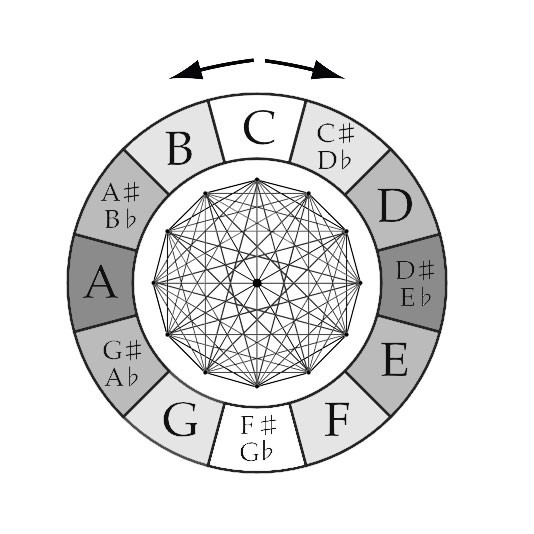
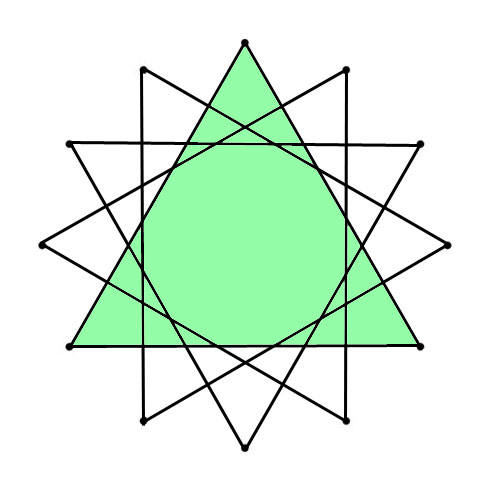
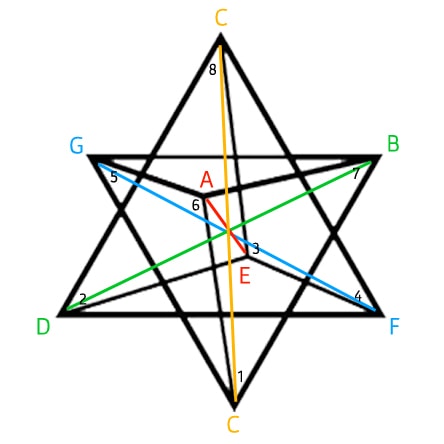

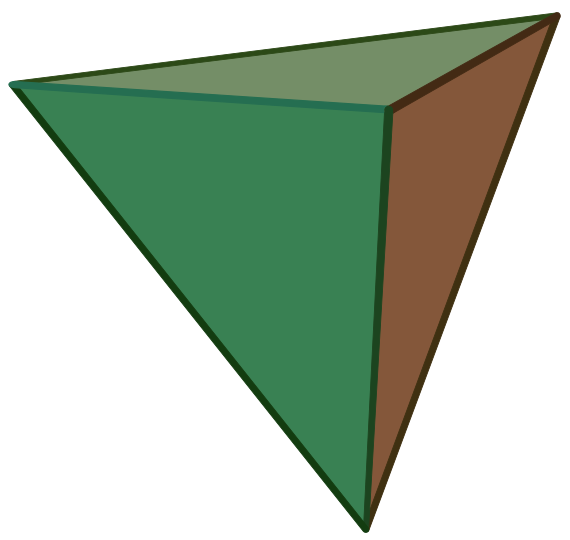
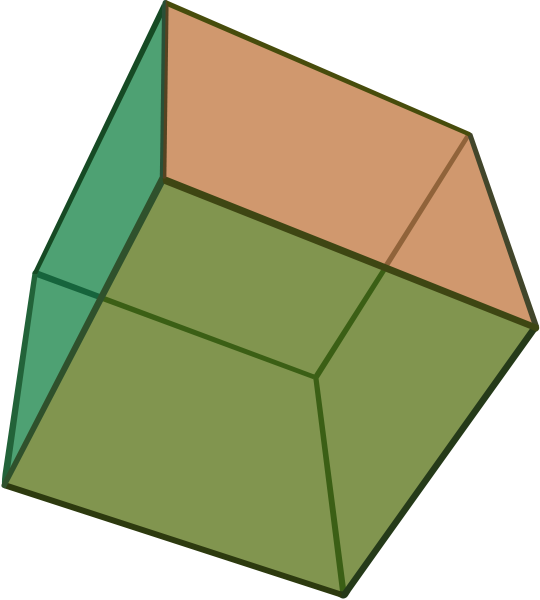
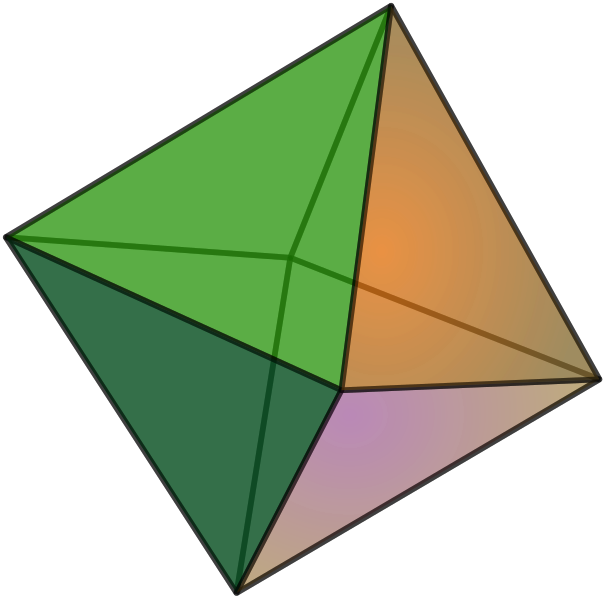
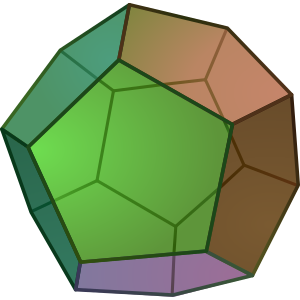
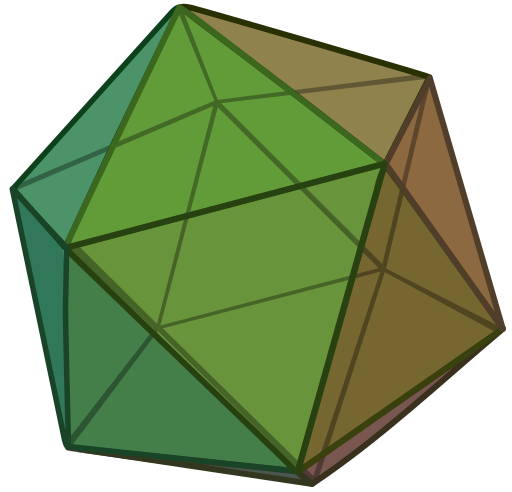

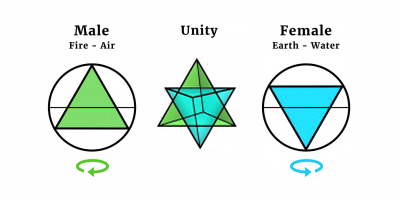
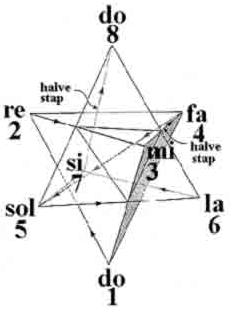
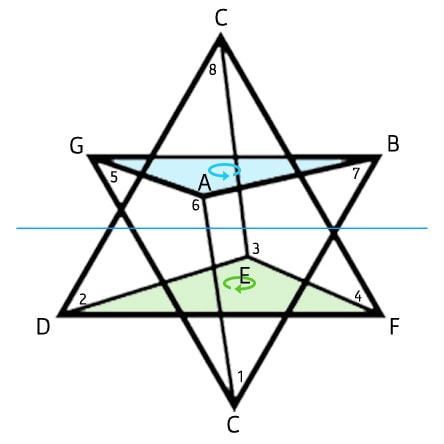
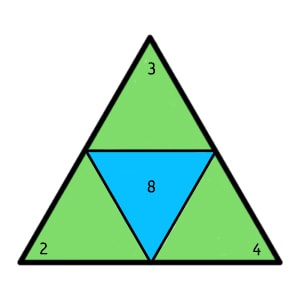
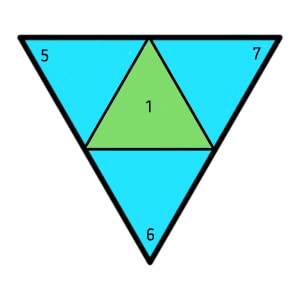

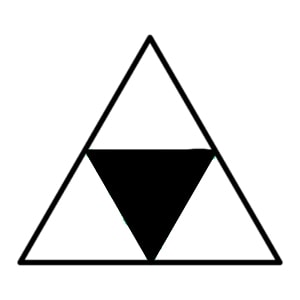
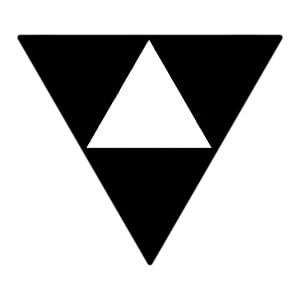
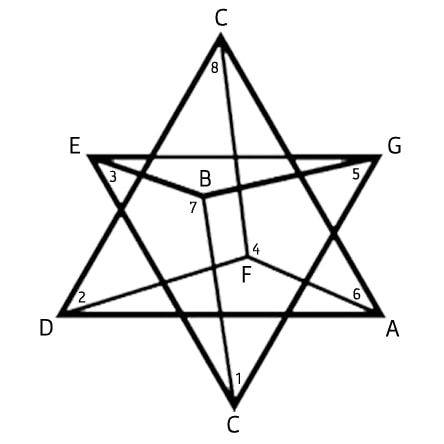

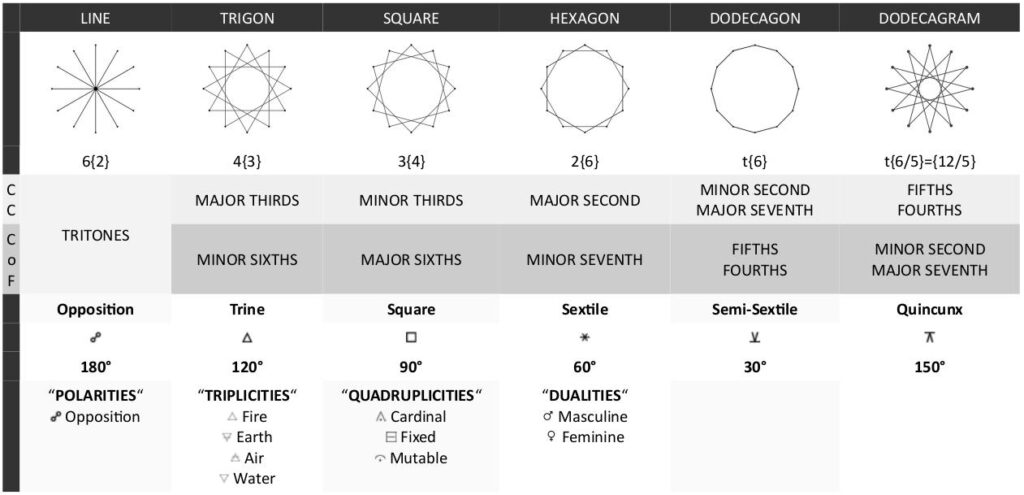
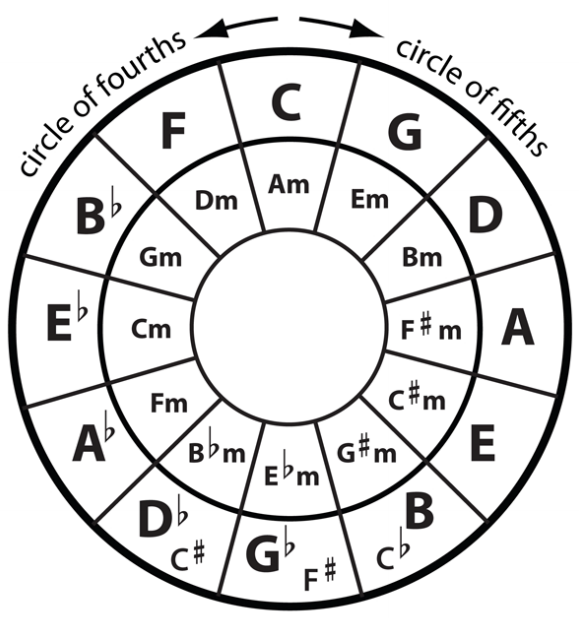
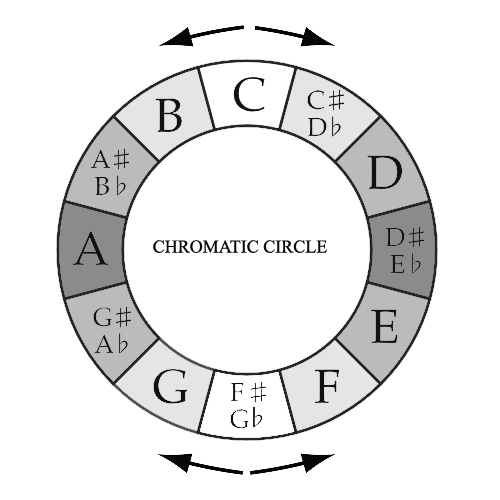

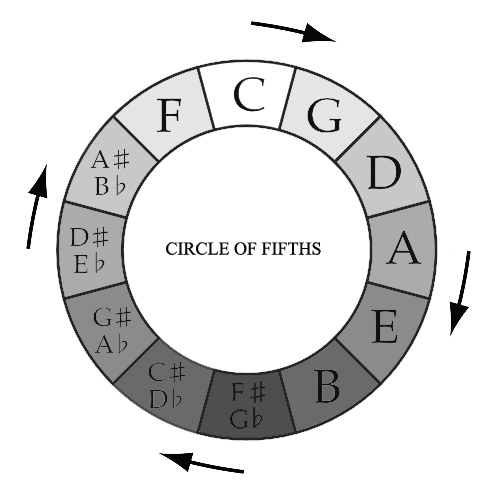
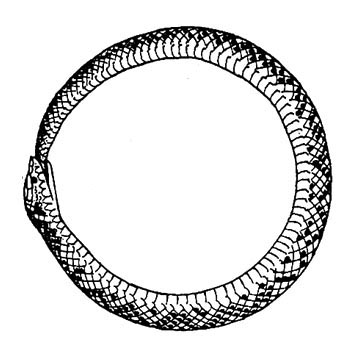


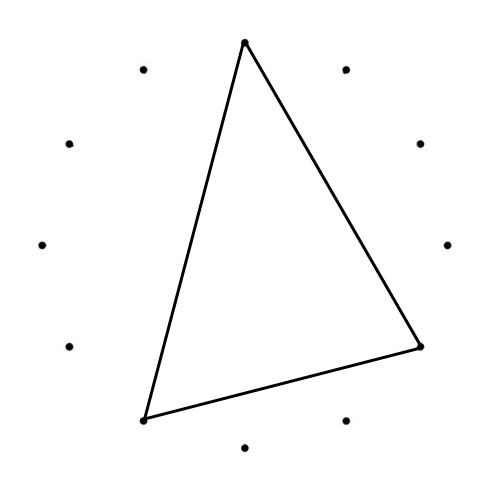
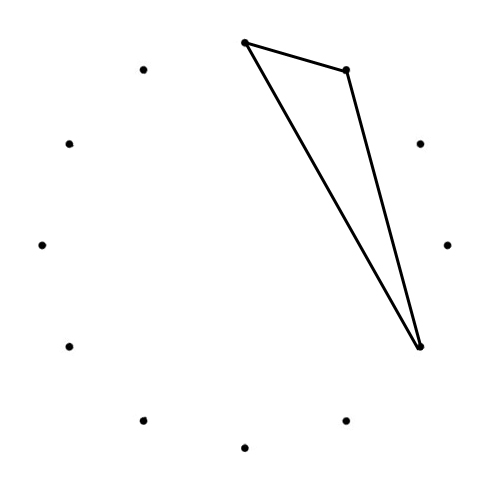
.jpg)
.jpg)
